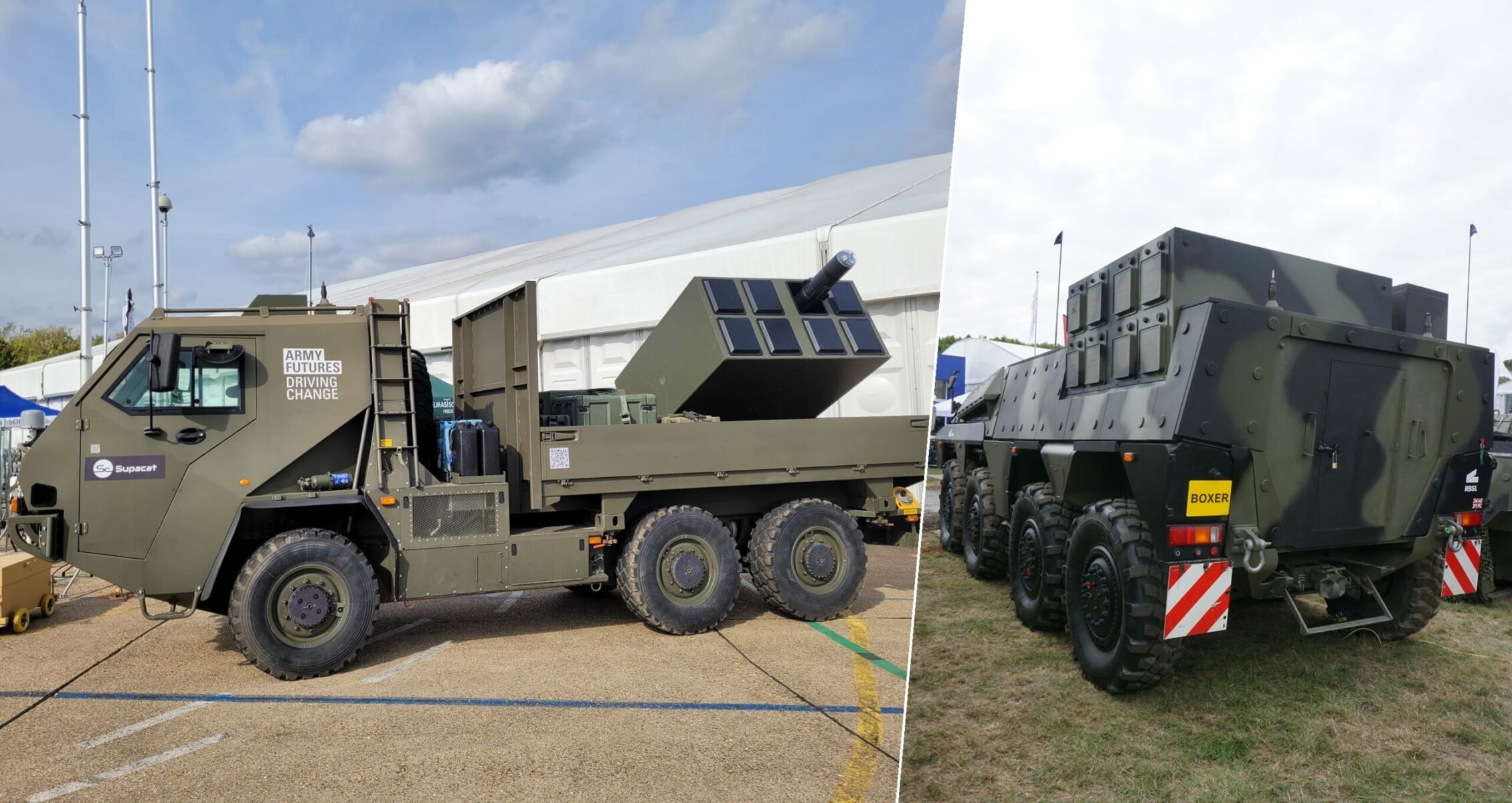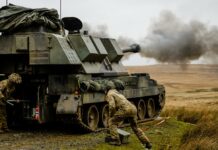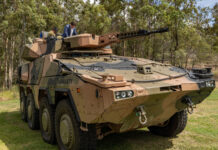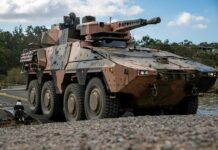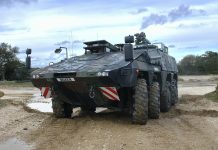At the DVD 2022 defence exhibition, RBSL and Supacat both unveiled carrier platforms for MBDA’s BRIMSTONE guided missile, aimed at the UK Ministry of Defence’s (MoD) Battle Group Organic Anti-Armour (BGOAA) programme which aims to replace some of the UK’s legacy ground-based anti-armour guided weapon systems.
The concept is not entirely new territory for MBDA, with the company having previously demonstrated several vehicles developed around a similar concept, and first shown at MSPO 2019 in Poland. These concept demonstrators were developed in conjunction with local industry for Poland’s Ottokar Brzoza programme. While the winner of this programme has not yet been selected, and final details such as carrier platform remain to be worked out, MBDA’s BRIMSTONE is expected to be selected as part of the solution.
In much the same manner as with Ottokar Brzoza, the two examples shown for the BGOAA programme featured collaboration with local industry, in this case with Supacat and RBSL for respective light and heavy implementations of the concept. Supacat’s version was designated ‘Brimstone HMT Overwatch’, and was based on an enclosed cab version of their company’s 6×6 High Mobility Transport (HMT) design, and armed with an elevating launcher armed with eight Brimstone missiles. RBSL’s version was designated ‘BRIMSTONE OVERWATCH ON BOXER’, and consisted of a mission module option for BOXER armed with the same elevating launcher with eight Brimstone missiles, and would be compatible with the UK’s BOXER drive modules already on order, requiring only a mission module swap. According to an MBDA representative, the launcher used by both vehicles was completely identical in terms of specifications.
In terms of armament, the systems are both expected to be offered with the Brimstone 3B variant, possessing an estimated range of approximately 12 km when ground-launched, which is sufficient to meet the MoD’s 10 km range requirement for the BGOAA programme.
It is noteworthy that as both Ottokar Brzoza and BGOAA have progressed, the companies involved have appeared to have scaled down the number of missiles on their respective concepts. Early mock-up versions shown in Poland used a launcher armed with 12 BRIMSTONE missiles, while one early concept graphic for BGOAA showed a BOXER using a fixed-elevation launcher armed with 16 BRIMSTONE missiles. In later concepts for both programmes, the total appears to have been scaled down to 8 BRIMSTONEs, albeit in Poland’s case this seems partially compensated for by the decision to operate the launchers in batteries of eight vehicles, giving 64 missiles per battery. The UK’s envisaged BGOAA vehicle formation structure has so far not been revealed.
In another departure from the earlier CG concept models, the ‘BRIMSTONE OVERWATCH ON BOXER’, featured a launcher which elevated and extended above the above the hull roof of the mission module, rather than being flush with the roof as on the original concept. An MBDA representative stated that although the launcher was higher than the hull roof, it remained within the maximum height of the UK’s planned version of BOXER, which will feature large roof-mounted stowage boxes on top of the mission module, in a slight departure from versions of BOXER in foreign service.
Mark Cazalet


